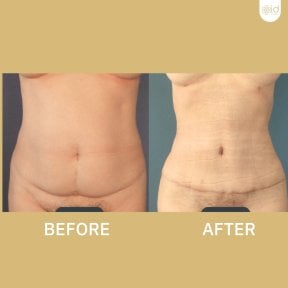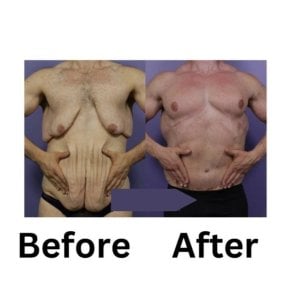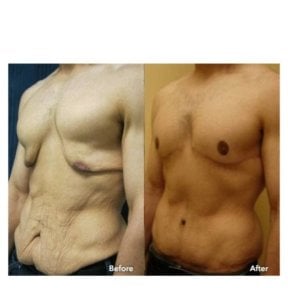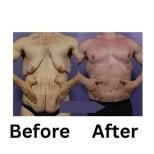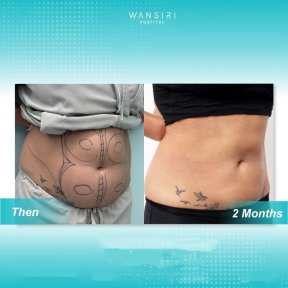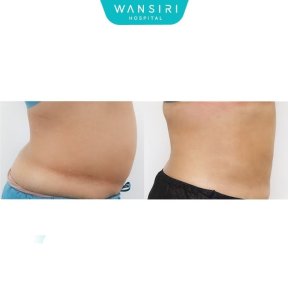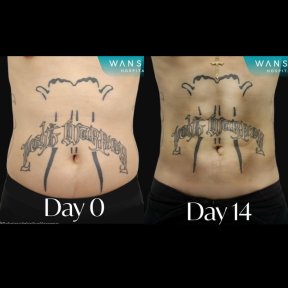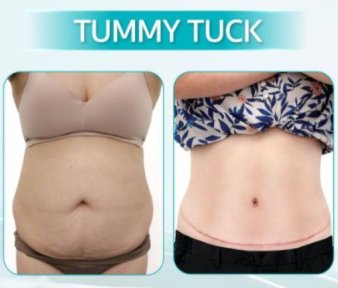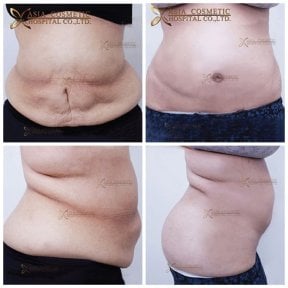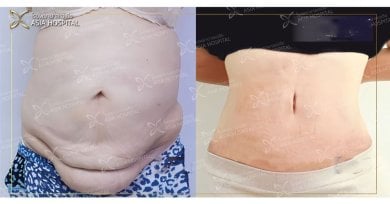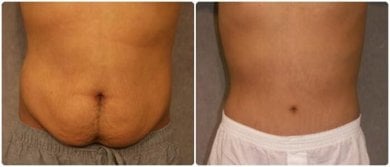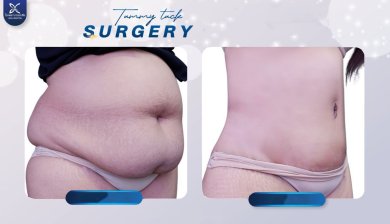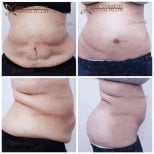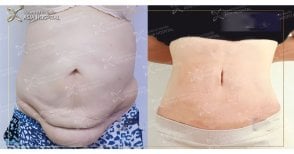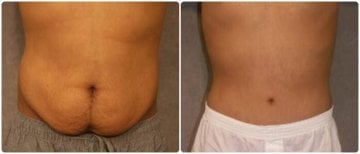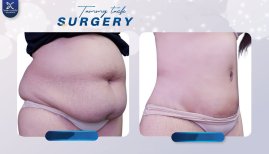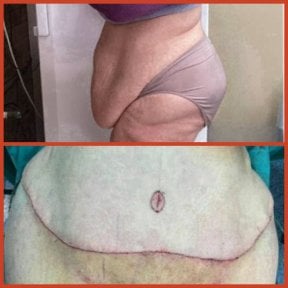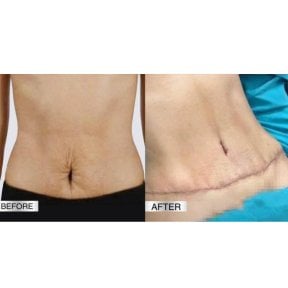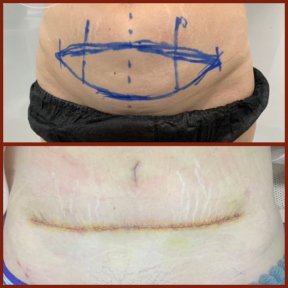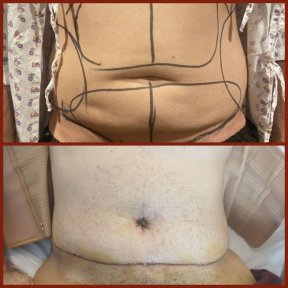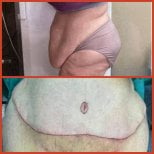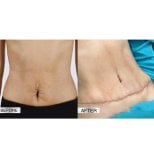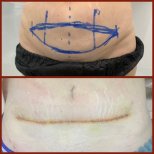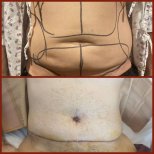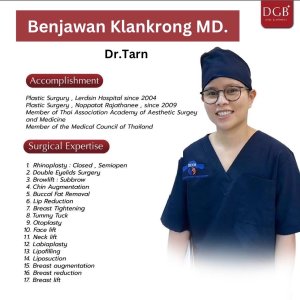What is a Tummy Tuck?
A tummy tuck, or abdominoplasty surgery, is a cosmetic surgery procedure that removes excess fat and skin from the abdominal area and tightens the abdominal muscles. It results in a smoother, firmer appearance of the stomach.
💡Patients choose this surgery after significant weight loss or multiple pregnancies, as it can address the sagging skin and stubborn fat that diet and exercise alone can't fix. It's about restoring not just your body but your self-confidence, too.
Abdominoplasty significantly improves quality of life, as shown by an 83% completion rate of follow-up assessments in a study of 64 women.
Key benefits included:
-enhanced body satisfaction;
- self-esteem;
- sexual functioning;
- and mental health;
- depression symptoms, drive for thinness, and bulimia decreased notably, with the overall risk of eating disorders significantly reduced. T
✅This demonstrates the procedure's profound positive impact on physical and psychological well-being.
What Are The Thai Belly Tuck Options?
When considering a tummy tuck in Thailand, several techniques suit different needs, from minor corrections to more extensive body contouring.
💠 Mini tummy tuck
Targets the lower abdomen below the belly button, ideal for minor loose skin and fat. It's less invasive and offers a quicker recovery.
💠 Full tummy tuck
Addresses the entire abdominal area and removes significant skin and fat while tightening the muscles. This option is best for more extensive corrections.
💠 Belt lipectomy
A comprehensive procedure that goes beyond the abdomen, addressing excess skin and fat around the waistline, lower back, and hips.
💡Modern methods like laser, ultrasound, and vibration techniques offer enhanced fat removal and skin tightening and are often included in tummy tuck Thailand packages.
Tummy Tuck vs Other Body Contouring Procedures
Abdominoplasty stands apart from other body sculpting procedures like liposuction, coolsculpting, and body lifts in terms of invasiveness, results, and recovery time.
💠 Flat belly surgery vs lipo
While suction-assisted lipectomy focuses on fat removal, an abdominoplasty also tightens muscles and eliminates excess skin.
The abdominal surgery is more invasive but delivers more comprehensive, long-lasting results, particularly for those with sagging skin.
💠 Abdominal surgery vs cryolipolysis
Coolsculpting is a non-invasive treatment that freezes fat cells, making it effective for smaller fat deposits.
However, it doesn't address skin laxity or muscle weakness, which a tummy tuck can correct for more dramatic results.
💠 Waistline correction surgery vs body Lift
A body lift is a more extensive procedure that addresses the abdomen, thighs, and buttocks.
It's suited for massive weight loss patients but requires a longer recovery than a belly tuck, which focuses mainly on the stomach area.
Who Is a Candidate for a Tummy Tuck?
![faq image]()
✅ Suitable patients:
-
Those with excess skin and fat after weight loss or pregnancy.
-
People with weakened abdominal muscles.
-
Patients at a stable weight and in good health.
-
Non-smokers or those willing to quit before and after surgery.
-
People with realistic expectations
💡A survey shows Gen X (43–58) and Gen Z (12–26) are most interested in tummy tucks, with 18% and 17% having the procedure. Baby Boomers (59–77) and Gen Y (27–42) show lower participation, likely due to age, finances, and health concerns.
❌ Not suitable for:
-
Patients planning future pregnancies or more weight loss
-
Those with unmanaged conditions like diabetes or heart issues
-
Smokers or those unable to quit
-
People unable to follow post-op care instructions
💡 A consultation with a plastic surgeon is essential to determine if a tummy tuck is right for you.
How Is the Surgery Performed?
| Step |
Details |
| Preparation |
Blood tests, physical exam, and medical history review. Stop smoking and avoid blood thinners. |
| Anesthesia |
General anesthesia to ensure the patient is asleep and pain-free. |
| Surgical Technique |
Incision made along the lower abdomen, excess skin and fat removed, muscles tightened, skin repositioned. |
| Duration |
Typically takes 2–5 hours, depending on the complexity of the procedure. |
What to Know About Recovery and Care?
| Stage |
Details |
| First 24–48 hours |
Monitor in recovery; go home the same day or after 1 night. Pain and swelling are expected. |
| Week 1 |
Swelling and bruising; light movement encouraged; rest essential. |
| Week 2–3 |
Swelling decreases; resume light activities, avoid bending/lifting. |
| 1 month |
Primary healing begins; stitches may be removed. |
| 3 months |
Return to moderate activity; avoid intense exercise. |
| 6 months–1 year |
Final results are visible, swelling subsides, and scars fade. |
Post-surgery tips 📝
-
Wear a compression garment for a few weeks to reduce swelling.
-
Attend follow-up visits to track your recovery.
-
Avoid heavy activity and intense workouts during healing.
-
Rest well and eat a balanced diet to support recovery and maintain results.
What Are The Potential Risks?
While a tummy tuck procedure is generally safe when performed by an experienced plastic surgeon, it's essential to understand the potential risks.
A tummy tuck is generally safe but carries some risks:
Side effects include:
-
Blood clots from immobility.
-
Fluid buildup requiring drainage.
-
Infection from poor wound care.
-
Scarring, usually along the bikini line.
-
Delayed healing due to smoking or health issues.
-
Anesthesia issues, especially in patients with health concerns
💡 A review shows that local complications, such as hematoma and seroma, occur in 10–20% of cases, while systemic issues are rare, affecting fewer than 1% of patients.
![faq image]()
Results: When to Expect the Effect?
Initial results appear within 2-3 weeks, with full results visible after 3-6 months as swelling reduces.
💡 Some patients may need minor adjustments depending on healing and weight changes.
✅ Results can last for years, especially with a stable weight. Maintaining a healthy lifestyle helps preserve the effect.
Benefits of Tummy Tuck in Thailand
Cost savings
Tummy tucks in Thailand range from $2,500 - $4,500. Even extended tummy tuck cost offers savings of up to 70% compared to Western countries.
![faq image]()
Skilled surgeons
Thai surgeons are often ISAPS-certified, ensuring high-quality care.
State-of-the-art facilities
Top clinics are JCI-accredited, maintaining exceptional standards.
Medical tourism packages ✈️
Clinics offer all-inclusive packages, combining surgery with recovery in beautiful destinations like Bangkok and Phuket.
What to Do Before Traveling to a Thai Clinic?
Visa
Check if you're eligible for visa-free entry or an e-visa for stays up to 30 days. Verify requirements on ivisa.com or the Thai government website.
Clinic stay
You'll typically need 5-7 days in Thailand, with 1-2 days spent at the clinic for the procedure and follow-up care.
Payment
Clinics accept credit cards, debit cards, and bank transfers. Pay in Thai Baht to avoid extra fees.
💚 Start by visiting the Bookimed website for patient testimonials related to tummy tuck. Thailand reviews help to make sure the chosen clinic iswhat you expect it to be.
What Do Tummy Tuck Packages Include in Thailand?
Clinics in Thailand offer comprehensive tummy tuck Thailand packages that cater to international patients.
💚 Patients often save more by booking through Bookimed rather than directly with clinics, gaining access to exclusive, limited-time deals for even greater discounts.
These include:
| Included |
Details |
| Medical Procedures |
Abdominal plastic surgery with possible Vaser liposuction |
| Consultations |
Pre-surgery and follow-up visits |
| Tests |
Blood tests, chest X-rays, and advanced tests for older patients |
| Anesthesia & Medication |
General anesthesia and post-op pain management |
| Accommodation |
1–5 nights in the hospital, hotel stay for recovery |
| Transport |
Transfers between hospital, hotel, and airport |
| Meals |
Basic meals in the hospital, tailored nutrition in premium packages |
| Post-op Care |
Compression garments and follow-up care |
| Patient Support |
24/7 assistance, language support, and travel help |
*Before booking, patients are advised to confirm directly with the clinic what is included in the treatment package.
References
- Thailand: consumers who had tummy tuck by generation 2023 | Statista. Statista. URL: https://www.statista.com/statistics/1481595/thailand-consumers-who-had-abdominoplasty-by-generation/ (date of access: 22.11.2024).
- Vidal P., Berner J. E., Will P. A. Managing Complications in Abdominoplasty: A Literature Review. Archives of Plastic Surgery. 2017. Vol. 44, no. 5. P. 457–468. URL: https://doi.org/10.5999/aps.2017.44.5.457 (date of access: 22.11.2024).
- Abdominoplasty Improves Quality of Life, Psychological Distress, and Eating Disorder Symptoms: A Prospective Study / K. M. M. Saariniemi et al. Plastic Surgery International. 2014. Vol. 2014. P. 1–4. URL: https://doi.org/10.1155/2014/197232 (date of access: 22.11.2024).

